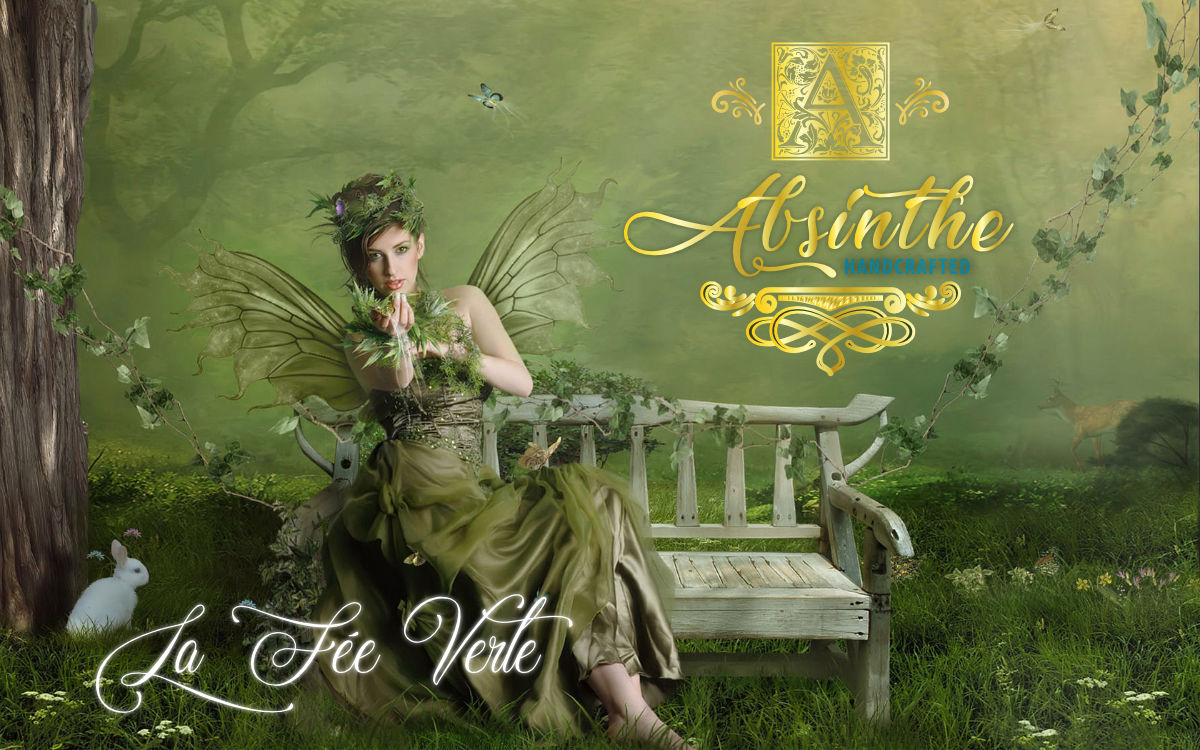At Black Horse Distillery, we often find ourselves inspired by the stories that live inside the bottle — tales of discovery, artistry, and sometimes controversy. Few spirits embody that more than absinthe, the infamous Green Fairy that once captured the imagination of an entire generation of artists in France.
Her story begins in ancient medicine, rises through a crisis that changed Europe’s drinking culture forever, and ends in infamy — only to be reborn again centuries later.
Born from Ancient Remedies
Long before it became a drink of poets and painters, wormwood — the defining herb of absinthe — had a reputation as a healer. References to wormwood (Artemisia absinthium) appear in one of the world’s oldest medical texts, the Ebers Papyrus, written in Egypt around 1550 BCE. The ancient Egyptians used it for digestive ailments and fevers, believing it to purify both the body and spirit.
Centuries later, in the late 1700s, a French physician named Dr. Pierre Ordinaire, living in Switzerland, distilled an herbal tonic from wormwood, anise, fennel, and alpine botanicals. Intended as a medicinal elixir, it was soon refined by local distillers into the emerald-hued spirit we now know as absinthe. Its bitterness was softened by herbs and the ritual of sweetened water, transforming it from remedy to revelation.
When the Vines Went Silent
By the mid-19th century, absinthe’s destiny intertwined with one of Europe’s greatest agricultural disasters — the Phylloxera crisis.
A tiny yellow aphid, Phylloxera Vastatrix (meaning “the devastator”), arrived from North America and began to destroy France’s vineyards from the roots up. Within decades, millions of vines withered, and the nation’s wine industry collapsed.
Wine — the heartbeat of French culture — became scarce and unaffordable. And so, in cafés and bistros, the French turned to something new. Absinthe filled the void — a drink of vivid colour, strong character, and herbal complexity.
It became a daily ritual. At five o’clock, l’heure verte — “the green hour” — began. The sight of absinthe turning from emerald to opalescent white as water dripped through a sugar cube became a familiar symbol of a nation finding comfort in creativity and ritual.
The Drink of Artists and Dreamers
In Paris, absinthe became more than a drink — it became a way of seeing the world. It was the spirit of the bohemian age, fuelling the imaginations of Van Gogh, Toulouse-Lautrec, Degas, Baudelaire, Rimbaud, and Picasso.
They called it La Fée Verte — the Green Fairy — a muse for those who lived between the shadows of reason and inspiration. Its effects were unlike other spirits, not only because of its herbal strength, but also because it was often mixed with laudanum, a tincture of opium and alcohol. This potent combination added to its dreamy, surreal reputation, blurring the line between intoxication and artistic transcendence.
In the smoky cafés of Montmartre, absinthe became a companion to brush and pen alike. Poets wrote of its emerald visions; painters captured its glow in glass and light. The ritual of preparing it — the slow drip of water, the dissolving sugar cube, the soft louche — was itself a performance of transformation.
From Muse to Monster
But as absinthe’s fame spread, so did fear. The temperance movement, backed by a powerful wine lobby eager to reclaim its dominance, began to demonize the Green Fairy. They blamed her for madness, addiction, and moral decay — the so-called absinthism that haunted newspapers and parlour talk.
In 1905, a Swiss farmer named Jean Lanfray committed a shocking murder after a long day of drinking — among many beverages, two glasses of absinthe. Though wine and brandy had played a much larger role, the incident became the symbol of absinthe’s alleged dangers.
By 1910, Switzerland banned it. France followed in 1915, and soon the rest of Europe. The Green Fairy — once the darling of artists and free thinkers — was exiled, her name spoken only in whispers.
The Return of the Green Fairy
For nearly a century, absinthe remained shrouded in myth — rumoured to cause hallucinations and madness. But modern science later proved what distillers always knew: the compound thujone, found in wormwood, exists only in trace amounts — too little to produce any hallucinogenic effect.
What absinthe truly offered was clarity of flavour, not delirium — the product of masterful distillation, not danger.
In the early 2000s, bans were lifted across Europe and the world, and absinthe returned. Small craft distilleries began reviving traditional recipes with care and precision, honouring the old rituals with modern understanding.
A Spirit of Art and Alchemy
At Black Horse Distillery, we see in absinthe’s story a reflection of the craft itself — where art, science, and a touch of mystery come together. It is a reminder that the line between medicine and magic, between discipline and imagination, is often drawn by those who dare to distill it.
The Green Fairy may have been misunderstood, but she remains immortal — a muse reborn through every artisan who values the beauty of balance, the precision of ritual, and the courage to create.
So when you next pour a glass — whether gin, whisky, or something more adventurous — take a moment to watch the way light plays through the liquid. In that shimmer, the spirit of absinthe still dances: bold, herbal, and eternally free.





